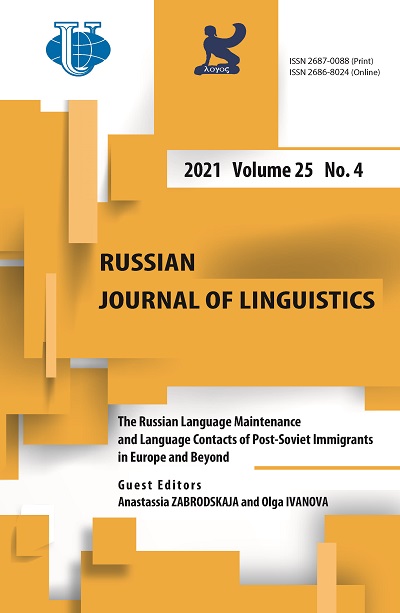Рецензия на книгу Andrea C. Schalley & Susana A. Eisenchlas (eds.). 2020. Handbook of Home Language Maintenance and Development: Social and Affective Factors. Berlin/Boston: Walter de Gruyter. ISBN 978-1-5015-1689-4
- Авторы: Гусейнова И.А.1
-
Учреждения:
- Московский государственный лингвистический университет
- Выпуск: Том 25, № 4 (2021): Сохранение русского языка и языковые контакты постсоветских иммигрантов в Европе и за ее пределами
- Страницы: 1126-1135
- Раздел: РЕЦЕНЗИИ
- URL: https://journals.rudn.ru/linguistics/article/view/29739
- DOI: https://doi.org/10.22363/2687-0088-2021-25-4-1126-1135
Цитировать
Полный текст
Аннотация
-
Об авторах
Иннара Алиевна Гусейнова
Московский государственный лингвистический университет
Автор, ответственный за переписку.
Email: guseynova@linguanet.ru
ORCID iD: 0000-0002-6544-699X
доктор филологических наук, профессор, проректор
Россия, 119034, Москва, ул. Остоженка, д. 38, стр. 1Список литературы
- Bourdieu, Pierre. 1986. Forms of capital. In John G. Richardson (ed.), Handbook of Theory and Research for the Sociology of Education, 241-258. New York, Greenwood Press
- Canagarajan, A. Suresh. 2005. Reclaiming the Local in Language Policy and Practice. Mahwah NJ: Lawrence Erlbaum

















